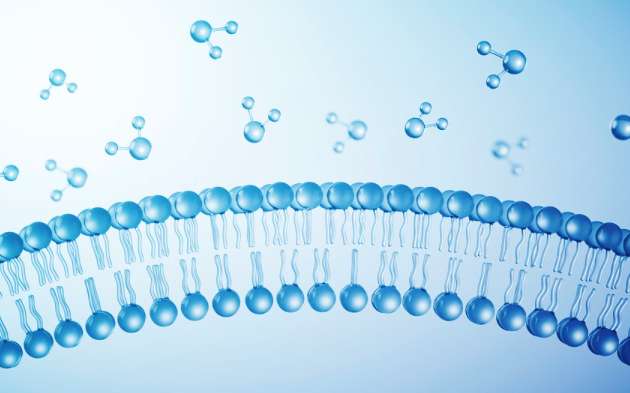Drug transporters can be major determinants of drug pharmacokinetics. To evaluate the drug interactions with these drug transporters, suitable in vitro methods or models should be applied. The literature has revealed the drug interactions between a Proteolysis-Targeting Chimera (PROTAC)* drug and rosuvastatin. The elevation of Aspartate aminotransferase and alanine aminotransferase (AST/ALT) were observed in subjects taking both the rosuvastatin and a PROTAC drug; symptoms alleviated after discontinuation of rosuvastatin, and treatment with the PROTAC drug could be continued. The possible reason is that the PROTAC drug inhibits the breast cancer resistance protein (BCRP) transporter, for which rosuvastatin is a known BCRP transporter substrate.1 The combination of rosuvastatin with BCRP inhibitors may inhibit its efflux in the intestine and inhibit its biliary excretion in the liver, thus resulting in elevating the blood levels of rosuvastatin and triggering corresponding adverse effects.2 Considering the potential Drug–Drug interactions (DDI) risk in the clinic, it is necessary to assess the DDI of PROTAC with BCRP transporters at the early screening stage. Based on our research experience, in vitro transporter studies of PROTAC molecules presents some challenges. Improper model selection may lead to erroneous results and mislead the assessment of DDI risk.
What is a BCRP transporter?
BCRP is a major ATP-binding cassette (ABC) transporter that plays an important role in drug transport. BCRP is predominantly expressed in the apical membrane of the intestinal epithelia, in the bile duct side of hepatocytes, and in the basolateral membrane of the blood-brain barrier, which can exert a significant impact on restricting the entry of BCRP substrates into intestinal epithelia, mediating drug biliary excretion and the blood-brain barrier.3 Many therapeutic agents commonly used in clinical practice are substrates for BCRP, such as the statins (rosuvastatin and pitavastatin) and the antineoplastic agents (axitinib, canatinib, imatinib, lapatinib, sunitinib, irinotecan, topotecan, etoposide, SN-38, and methotrexate).2 The latest Food and Drug Administration guidelines for in vitro DDI studies also clarify that BCRP is one of the nine drug transporters recommended for evaluation.4
How to evaluate the inhibition of BCRP by PROTAC
The risk of DDI can be assessed at an early stage using in vitro transporter models. If in vitro studies indicate that a drug is a BCRP inhibitor, the sponsor should consider whether to conduct a clinical drug interaction study. Therefore, the results of the in vitro study are decisive. With regard to the selection of transporter models, Caco-2, BCRP-overexpressed cells, or membrane vesicles with a high expression of BCRP can be used to determine if an investigational drug can inhibit BCRP. Of these, Caco-2 cells are common models for evaluation due to their availability. When we first studied these molecules, we did not anticipate any difference among those models. So we selected the most frequently used Caco-2 model to evaluate the BCRP inhibition potential of PROTACs. But here's the lesson we learned, improper model selection may lead to erroneous conclusions. We would like to share our experiences on this study and emphasize the model selection for PROTAC molecules.
Case study and analysis on the inhibition of BCRP by PROTAC
The mechanism of the BCRP inhibition assay is shown in Figure 1. BCRP substrate can be pumped out of cells via BCRP, and the direction is from inside to outside. In the presence of the BCRP inhibitor, the BCRP-mediated efflux of the substrate can be inhibited. The inhibitory effect of a PROTAC molecule on BCRP was determined by using a Caco-2 cell model. The results of the assay showed no inhibitory effect of the PROTAC molecule on BCRP, which is inconsistent with the literature. We ruled out solubility and adsorption issues and tried to find the underlying reasons.

Figure 1.Breast cancer resistance protein (BCRP) efflux and transport inhibition
The molecular mechanisms of BCRP inhibition are relatively complicated: (a) one class of inhibitors, such as fumitremorgin C and Ko143, inhibits the ATPase activity of BCRP; (b) another class of inhibitors has the same binding site as the substrate, affecting the binding of the substrate to BCRP; and (c) the third class of inhibitors binds outside of the substrate binding site, causing a conformational change in BCRP and thus affect substrate transport.5 Reports on the third mechanism are relatively limited, for which the inhibitor binding site may be intracellular or extracellular, whereas the other two inhibition mechanisms require the inhibitor to enter the cell first.
A general characteristic of PROTAC molecules is poor permeability. In the Caco-2 assay, an inhibitor in the incubation system needs to enter the cells to work. Although the concentration of PROTAC outside Caco-2 cells is high, the intracellular drug concentrations may be low due to poor permeability. Therefore, we speculate that it is likely that the concentration of PROTAC in Caco-2 cells is too low to exert an inhibitory effect (Figure 2).

Figure 2. A low intracellular inhibitor concentration fails to exert an inhibitory effect
Customized assay on PROTAC
Based on the analysis of the above influence factors, we switched to a membrane vesicle model to evaluate BCRP inhibition by PROTAC. Membrane vesicles expose the substrate binding sites of ABC transporters to extracellular buffers, which is conducive to studying the interaction of drug candidates as substrates and inhibitors with ABC transporters. Figure 3 illustrates the mechanism of everted membrane vesicles. Originally, the substrate transport direction mediated by efflux transporters is from intracellular to extracellular, but after eversion, the substrate transport direction is reversed (extracellular to intracellular). In this model, the inhibitor can be in direct contact with the transporter substrate binding site outside the membrane.

Figure 3.Mechanism of eversion of epithelial membrane vesicles
Results
The membrane vesicle method showed that the PROTAC molecule had a strong inhibitory effect on BCRP, which was consistent with the previous literature reports.
Conclusion
The vesicle model is more sensitive in assessing efflux transporter inhibition than conventional methods that fail to obtain inhibition. This case caused us to pay attention to the model selection in the study of the inhibition of efflux transporters by PROTAC molecules. In addition to BCRP, the same problem may exist in the inhibition of other efflux transporters by PROTAC molecules. The poor permeability of PROTAC may lead to an underestimation of the risk of PROTAC inhibition of efflux transporters when assessing the inhibition of efflux transporters by PROTAC molecules using an intact cell model. The membrane vesicle model may be more suitable to study the inhibitory effect of low-permeability PROTAC molecules on the efflux transporter. This means that it is vital to assess the DDI of PROTACs with BCRP transporters at the early screening stage.
Click here to learn more about the strategies for PROTAC, or talk to a WuXi AppTec expert today to get the support you need to achieve your drug development goals.
*PROTAC® is a registered trademark of Arvinas. In this article, PROTAC specifically refers to the abbreviation of Proteolysis-Targeting Chimera as therapeutic modalities.
Authors: Liping Ma, Chengyuan Li, Jing Jin
Committed to accelerating drug discovery and development, we offer a full range of discovery screening, preclinical development, clinical drug metabolism, and pharmacokinetic (DMPK) platforms and services. With research facilities in the United States (New Jersey) and China (Shanghai, Suzhou, Nanjing, and Nantong), 1,000+ scientists, and over fifteen years of experience in Investigational New Drug (IND) application, our DMPK team at WuXi AppTec are serving 1,500+ global clients, and have successfully supported 1,200+ IND applications.
Reference
[1] DOI: 10.1200/JCO.2020.38.15_suppl.3500 Journal of Clinical Oncology 38, no. 15_suppl (May 20, 2020) 3500-3500.
[2] Lee CA, O'Connor MA, Ritchie TK, Galetin A, Cook JA, Ragueneau-Majlessi I, Ellens H, Feng B, Taub ME, Paine MF, Polli JW, Ware JA, Zamek-Gliszczynski MJ. Breast cancer resistance protein (ABCG2) in clinical pharmacokinetics and drug interactions: practical recommendations for clinical victim and perpetrator drug-drug interaction study design. Drug Metab Dispos. 2015 Apr;43(4):490-509.
[3] International Transporter Consortium, Giacomini KM, Huang SM, Tweedie DJ, Benet LZ, Brouwer KL, Chu X, Dahlin A, Evers R, Fischer V, Hillgren KM, Hoffmaster KA, Ishikawa T, Keppler D, Kim RB, Lee CA, Niemi M, Polli JW, Sugiyama Y, Swaan PW, Ware JA, Wright SH, Yee SW, Zamek-Gliszczynski MJ, Zhang L. Membrane transporters in drug development. Nat Rev Drug Discov. 2010 Mar;9(3):215-36.
[4] In Vitro Drug Interaction Studies — Cytochrome P450 Enzyme- and Transporter-Mediated Drug Interactions Guidance for Industry. FDA. 2020 Jan.
[5] Mao Q, Unadkat JD. Role of the breast cancer resistance protein (ABCG2) in drug transport. AAPS J. 2005 May 11;7(1):E118-33.
Related Services and Platforms




-

 In Vitro ADME ServicesLearn More
In Vitro ADME ServicesLearn More -

 Novel Drug Modalities DMPK Enabling PlatformsLearn More
Novel Drug Modalities DMPK Enabling PlatformsLearn More -

 Physicochemical Property StudyLearn More
Physicochemical Property StudyLearn More -

 Permeability and Transporter StudyLearn More
Permeability and Transporter StudyLearn More -

 Drug Distribution and Protein Binding StudiesLearn More
Drug Distribution and Protein Binding StudiesLearn More -

 Metabolic Stability StudyLearn More
Metabolic Stability StudyLearn More -

 Drug Interactions StudyLearn More
Drug Interactions StudyLearn More
Stay Connected
Keep up with the latest news and insights.











